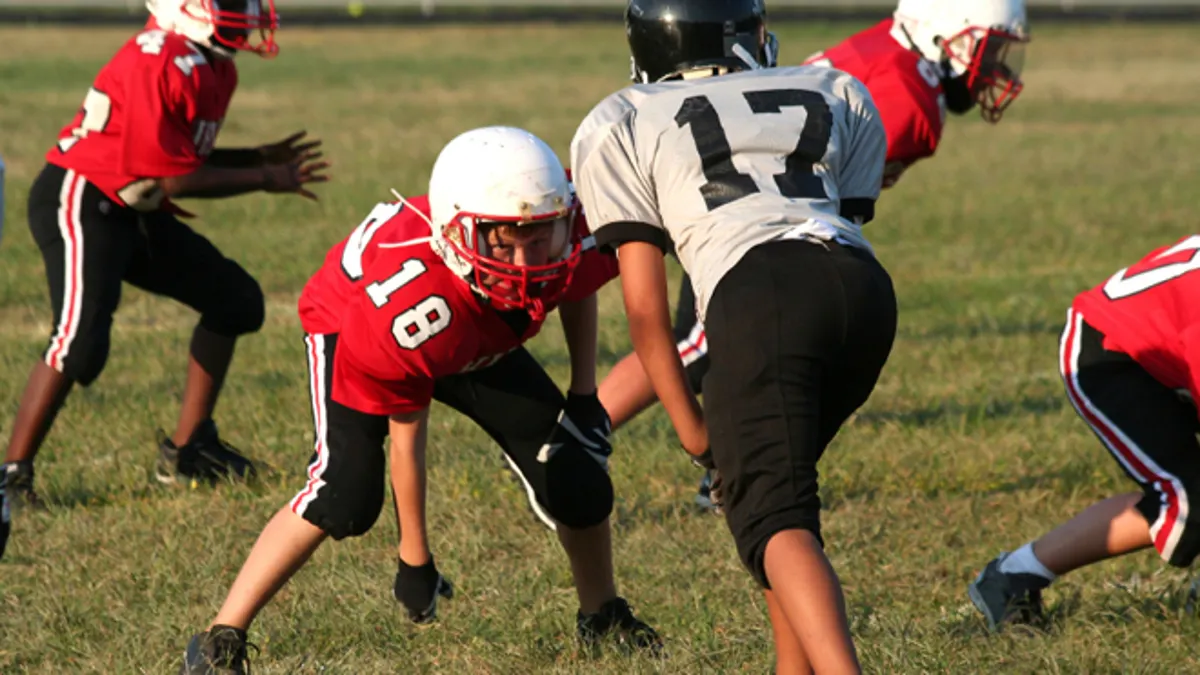 I. Introduction
I. Introduction
A. The allure and excitement of sports
Sports have been a source of entertainment, competition, and passion for centuries. From team sports to individual pursuits, sports capture our attention and ignite our adrenaline. The thrill and excitement of sports draw millions of people to participate and spectate.
B. Acknowledging the inherent risks and dangers
While sports offer numerous benefits, it is important to recognize that they can also pose risks and dangers. From minor injuries to life-threatening accidents, the physicality and intensity of certain sports must be respected and understood.
C. Introduction to the topic of the most dangerous sports
In this article, we will explore the world of sports and shine a light on the most dangerous ones. These sports push the boundaries of human capability and test the limits of physical and mental endurance. We will delve into the factors that contribute to the danger in these sports and examine the risks associated with them.
II. Understanding the Factors that Contribute to Danger in Sports
A. Physical intensity and contact
- Impact sports and collision-based activities Sports such as American football, rugby, and ice hockey involve frequent and intentional physical contact. The high-energy collisions between players increase the likelihood of injuries, including concussions, fractures, and musculoskeletal trauma.
- Potential for injuries and long-term health implications Repeated exposure to physical impact and contact in certain sports can result in long-term health issues. Chronic traumatic encephalopathy (CTE) in contact sports and joint-related problems in high-impact activities are examples of the potential health implications.
B. Extreme environments and conditions
- Adventure sports and extreme outdoor activities Adventure sports like mountaineering, skydiving, and whitewater rafting take place in extreme environments with unpredictable elements. The exposure to high altitudes, extreme temperatures, and challenging landscapes adds to the inherent risks associated with these activities.
- The unpredictable nature of natural elements and terrain Sports conducted in natural elements like surfing, big-wave surfing, and free-falling wingsuit flying are heavily influenced by the forces of nature. The dynamic and unpredictable nature of elements such as water, wind, waves, and mountains amplify the risks involved.
C. Equipment and technological risks
- High-speed sports and motorized activities Sports like Formula 1 racing, motorcycle racing, and downhill skiing involve high speeds, increasing the risk of accidents and injuries. The reliance on technologically advanced equipment adds another layer of risk and potential failure.
- Dependence on proper safety gear and equipment functionality The effectiveness of safety gear and equipment is critical in ensuring athlete safety. Malfunctioning or inadequate equipment can lead to severe injuries or fatalities in sports such as rock climbing, bungee jumping, and motor racing.
III. Examining High-Risk Sports and Activities
A. Combat Sports
- Boxing: Dangers of repeated head trauma Boxing is known for its high-risk nature due to the repeated head trauma that fighters sustain. The impact of punches can lead to concussions, brain injuries, and long-term cognitive impairments.
- Mixed Martial Arts (MMA): Risks of various fighting techniques MMA combines different martial arts disciplines, including striking and grappling techniques. The diverse range of techniques increases the potential for injuries, such as broken bones, joint dislocations, and concussions.
B. Extreme Adventure Sports
- Rock Climbing: Height-related hazards and equipment failure Rock climbing involves scaling natural rock formations at different heights. The risks include falls, equipment failures, and the physical strain on the body caused by long climbs and challenging routes.
- Base Jumping: The dangers of cliff jumping and parachute malfunction Base jumping is an adrenaline-fueled sport that involves jumping from fixed objects, such as cliffs, with a parachute. The risks are significant, including parachute malfunctions, misjudgments of altitude, and uncontrolled landings.
C. Motor Racing and Motorsports
- Formula 1: High-speed crashes and potential for severe injuries Formula 1 racing reaches astonishing speeds, and accidents can occur due to mechanical failures, driver errors, or external factors. High-speed crashes can result in severe injuries, including fractures, burns, and spinal cord injuries.
- Motocross: Challenges of navigating off-road terrains and motorcycle accidents Motocross is an off-road motorcycle racing sport that involves navigating rough terrains, jumps, and obstacles. The risks include high-speed crashes, fractures, concussions, and injuries from motorcycle impacts.
IV. Factors Influencing Safety Measures and Risk Management in Dangerous Sports
A. Training and skills development
- Importance of proper training and coaching Proper training and coaching are vital to help athletes develop the necessary skills, techniques, and strategies to mitigate risks and enhance safety in high-risk sports.
- Skill acquisition for risk mitigation Athletes need to acquire specific skills to manage risks effectively, such as learning proper techniques for impact absorption, minimizing head trauma, and understanding situational awareness.
B. Rule changes and safety regulations
- Evolution of sports rules and governing bodies Sports organizations continually evaluate and revise rules and regulations to enhance safety. This includes implementing weight classes, protective equipment requirements, and enforcing protocols to minimize risks.
- The continuous effort to improve safety standards and protocols Organizations, researchers, and medical professionals collaborate to develop improved safety standards, injury prevention strategies, and emergency response protocols for high-risk sports.
V. Balancing Thrill and Safety in Dangerous Sports
A. Personal responsibility and informed decision-making
- Risk assessment and individual preferences Athletes and participants must assess the risks associated with high-risk sports and make informed decisions about their involvement based on their abilities, training, and comfort levels.
- Importance of education and awareness regarding potential dangers Education and awareness programs should be in place to educate athletes, participants, and the general public about the risks, safety measures, and precautions necessary in high-risk sports.
B. Evolving technologies and equipment advancements
- Innovations in protective gear and safety equipment Developments in technology have led to improvements in protective gear, such as advanced helmets, impact-absorbing materials, and body protection, which help minimize injuries and enhance safety.
- The role of technology in minimizing risk and improving safety measures Advancements in video analysis, sensors, and data collection allow for better monitoring of athletes’ performance, identifying areas of improvement, and enhancing safety measures.
In conclusion, understanding the dangers associated with high-risk sports and activities is essential for athletes, organizers, and participants. Through proper training, rule changes, and personal responsibility, it is possible to balance the thrill of these sports with measures that prioritize safety. Advancements in technology and equipment further contribute to minimizing risks and ensuring the well-being of athletes engaged in dangerous sports. By recognizing the inherent risks and striving for continuous improvements, we can enjoy the excitement and competitiveness of high-risk sports while taking measures to protect ourselves and others.






